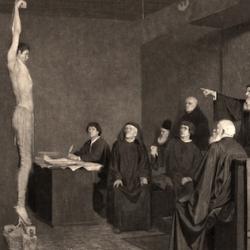The point has been made by many, but few have made it as concisely as Ivan Illich in Medical Nemesis: The Expropriation of Health . Writing in the 1970s, he noted that “during the last century doctors have affected epidemics no more profoundly than did priests during earlier times. Epidemics came and went, imprecated by both but touched by neither”(5).
Most infectious diseases began to decline before medical researchers and physicians figured out what was happening and took action: “Tyberculosis . . . reached a peak over two generations. In New York in 1812 the death rate was estimated to be higher than 700 per 10,000; by 1882, when Koch first isolated and cultured the bacillus, it had already declined to 370 per 10,000. The rate was down to 180 when the first sanatorium was opened in 1910 . . . . After World War II, but before antibiotics became routine, it had slipped to eleventh place with a rate of 48.” Other diseases – cholera, dysentery, typhoid – also “dwindled outside the physician’s control” (5-6).
Improved housing and sanitation may account for some of the decline, but Illich claims that “by far the most important factor was a higher host-resistance due to better nutrition.”















